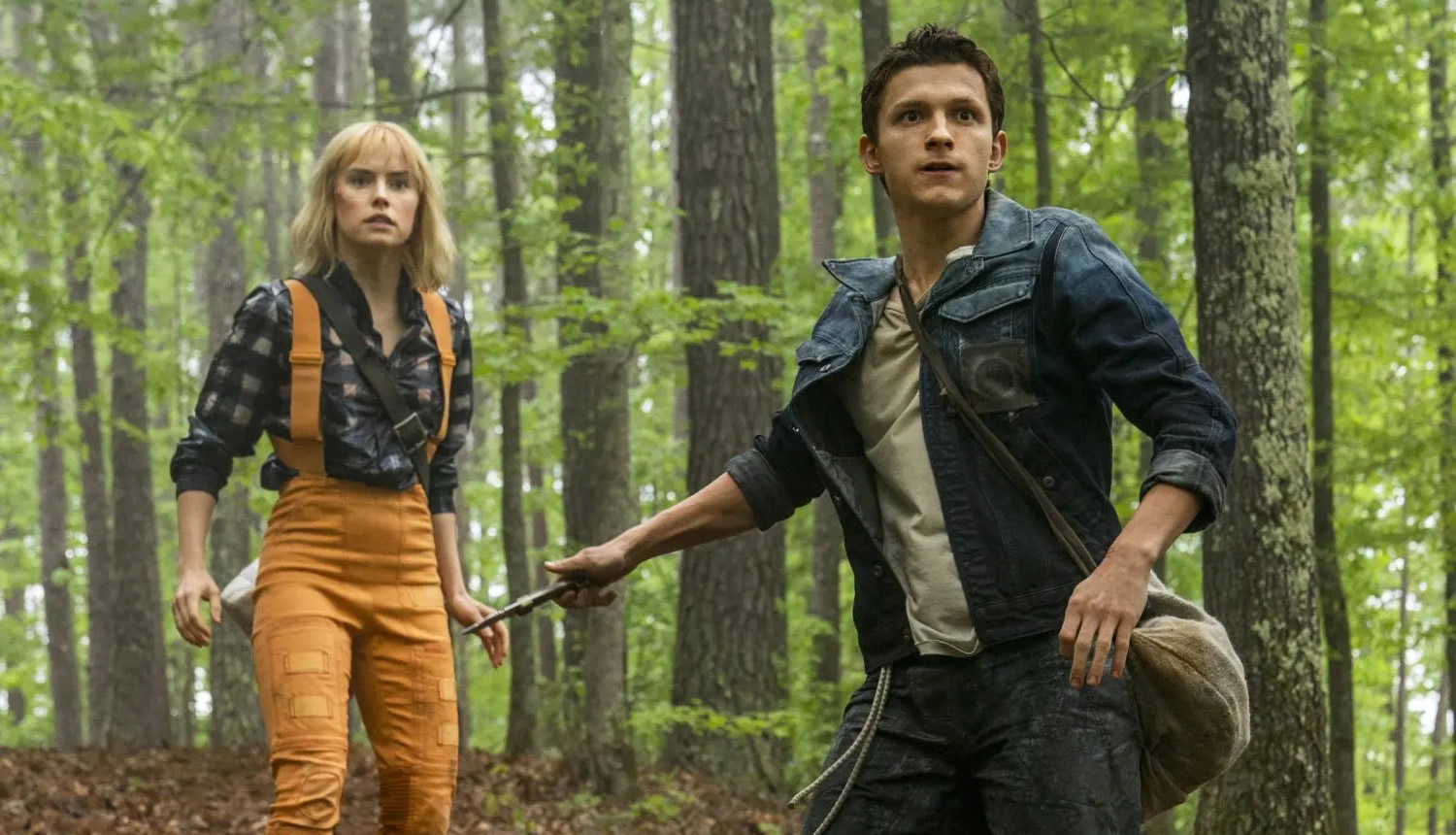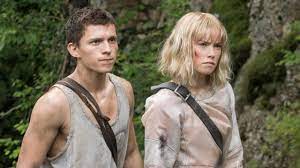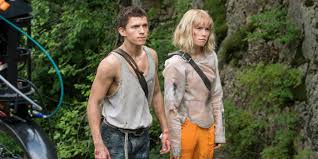🎬 Chaos Walking (2021)

Chaos Walking (2021) Review
Directed by Doug Liman, Chaos Walking (2021) is an adaptation of Patrick Ness’s acclaimed sci-fi novel The Knife of Never Letting Go, the first book in the Chaos Walking trilogy. With a star-studded cast featuring Tom Holland and Daisy Ridley, the film sets out to explore an intriguing premise in a dystopian world. While it boasts strong performances and impressive visuals, the film’s uneven pacing and underdeveloped narrative prevent it from fully realizing its ambitious potential.
Plot Overview
Set on a distant planet called New World, Chaos Walking takes place in a society where all men’s thoughts are visible and audible, a phenomenon known as “The Noise.” The story follows Todd Hewitt (Tom Holland), a young man raised in an all-male settlement after the women were reportedly killed by the planet’s native species, the Spackle.
Todd’s life is upended when he encounters Viola (Daisy Ridley), a mysterious girl who crash-lands on the planet and is immune to The Noise. As Todd helps Viola evade the oppressive mayor of his settlement, David Prentiss (Mads Mikkelsen), they uncover buried secrets about their world and its dark history. Together, they must navigate the dangers of the New World and uncover the truth behind The Noise and the fate of the settlement’s women.
Performances
Tom Holland delivers a heartfelt and earnest performance as Todd Hewitt, capturing the character’s vulnerability and inner conflict as he grapples with the overwhelming nature of The Noise and his growing awareness of the world’s injustices. Holland’s chemistry with Daisy Ridley is a highlight, providing a sense of camaraderie and tension that drives the narrative forward.
Daisy Ridley’s portrayal of Viola offers a compelling balance of resilience and curiosity. Ridley’s ability to convey strength through silence contrasts effectively with Todd’s constant Noise, emphasizing her character’s outsider status and emotional depth.
Mads Mikkelsen’s performance as the menacing Mayor Prentiss adds a layer of gravitas to the film. However, the character’s motivations and backstory are underexplored, leaving his potential as a nuanced antagonist largely untapped. Supporting roles by David Oyelowo as the zealous preacher Aaron and Cynthia Erivo as the leader of a hidden settlement add intrigue, though their arcs feel rushed and underdeveloped.
Visuals and World-Building
The film’s visuals are one of its standout elements, with lush landscapes and atmospheric settings that bring the New World to life. The depiction of The Noise, a swirling aura of light and sound that manifests men’s thoughts, is visually striking but inconsistently executed. While it effectively conveys Todd’s internal struggles, the rules governing The Noise are not fully explained, leaving some aspects of its functionality ambiguous.
The world-building in Chaos Walking shows promise but feels incomplete. The history of the New World, the relationship between humans and the Spackle, and the societal dynamics of the settlements are touched upon but lack sufficient depth, making it difficult for viewers to fully immerse themselves in the story’s universe.
Themes and Writing
Chaos Walking explores themes of communication, identity, and power dynamics, particularly in a world where privacy is nonexistent for half the population. The film also touches on gender dynamics, with Viola’s presence challenging the male-dominated settlement’s status quo. However, these themes are often overshadowed by the film’s focus on action and plot progression, leaving their exploration feeling superficial.
The screenplay, co-written by Patrick Ness and Christopher Ford, struggles to condense the novel’s complex narrative into a two-hour runtime. As a result, character development and emotional resonance are sacrificed in favor of advancing the plot. The dialogue occasionally veers into exposition-heavy territory, hindering the film’s ability to convey its ideas organically.
Strengths and Weaknesses
The film’s primary strength lies in its central performances and the chemistry between Holland and Ridley. Their portrayals anchor the story and provide moments of genuine emotion amidst the chaos. The action sequences are well-executed, adding bursts of energy to the narrative.
However, Chaos Walking is hindered by its uneven pacing and lack of narrative cohesion. Key plot points are introduced and resolved too quickly, while others are left unresolved, creating a sense of fragmentation. The film’s reliance on its premise—the audible thoughts of men—is intriguing but underutilized, leaving its potential largely unexplored.
Conclusion
Chaos Walking is an ambitious but flawed adaptation that delivers moments of intrigue and strong performances but fails to fully capitalize on its thought-provoking premise. While it offers glimpses of a compelling story, its rushed narrative and lack of depth ultimately leave it feeling incomplete.
For fans of the book series, the film may serve as a visually engaging, if underwhelming, interpretation of Patrick Ness’s work. For newcomers, it offers an entertaining but uneven sci-fi adventure that struggles to leave a lasting impression. Despite its shortcomings, Chaos Walking hints at the potential for deeper exploration of its world and characters in future installments, should the franchise continue.